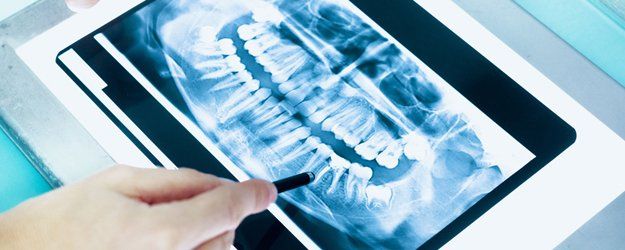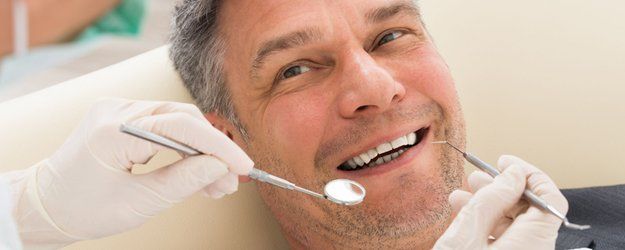GENERAL DENTISTRY
30+ Years of ExperienceState-of-the-Art TechnologyPersonalized Care
- 30+ Years of Experience- State-Of-The-Art Technology- Personalized Care
Dental Cleanings and Prevention
Cleanings and Prevention
A preventive program is a cooperative effort by the patient, dentist, and dental staff to preserve the natural dentition and supporting structures by preventing the onset, progress, and recurrence of dental diseases and conditions.
Preventing dental disease starts at home with good oral hygiene and a balanced diet. It is continued in the dental office by the efforts of your dentist and dental hygienist to promote, restore, and maintain your oral health.
Prevention also includes regular dental exams, cleanings, and X-rays. Sealants and fluoride are also great preventive treatments that help protect the teeth.
Prevention helps avoid serious and costly dental problems and is the key to having a healthy, confident, beautiful smile.

Dental Exams
A comprehensive dental exam will be performed by your dentist at your initial dental visit. At regular check-up exams, your dentist and hygienist will perform the following:
- Examination of diagnostic X-rays (radiographs): Essential for detection of decay, tumors, cysts, and bone loss. X-rays also help determine tooth and root positions
- Oral cancer screening: Check the face, neck, lips, tongue, throat, tissues, and gums for any signs of oral cancer
- Gum disease evaluation: Check the gums and bone around the teeth for any signs of periodontal disease
- Examination of tooth decay: All tooth surfaces will be checked for decay with special dental instruments
- Examination of existing restorations: Check current fillings, crowns, etc.

Professional Dental Cleanings
Professional dental cleanings (dental prophylaxis) are usually performed by Registered Dental Hygienists. Your cleaning appointment will include a dental exam and the following:
- Removal of calculus (tartar): Calculus is hardened plaque that has been left on the tooth for some time and is now firmly attached to the tooth surface. Calculus forms above and below the gum line and can only be removed with special dental instruments
- Removal of plaque: Plaque is a sticky, almost invisible film that forms on the teeth. It is a growing colony of living bacteria, food debris, and saliva. The bacteria produce toxins (poisons) that inflame the gums. This inflammation is the start of periodontal disease
- Teeth polishing: Remove stain and plaque that is not otherwise removed during tooth brushing and scaling

Dental X-Rays
Dental radiographs (X-rays) are essential, preventative, diagnostic tools that provide valuable information not visible during a regular dental exam. Dentists and dental hygienists use this information to safely and accurately detect hidden dental abnormalities and complete an accurate treatment plan. Without X-rays, problem areas may go undetected.
Dental X-rays may reveal:
- Abscesses or cysts
- Bone loss
- Cancerous and non-cancerous tumors
- Decay between the teeth
- Developmental abnormalities
- Poor tooth and root positions
- Problems inside a tooth or below the gum line
- Detecting and treating dental problems at an early stage can save you time, money, unnecessary discomfort, and your teeth
Are dental X-rays safe?
We are all exposed to natural radiation in our environment. The amount of radiation exposure from a full mouth series of X-rays is equal to the amount a person receives in a single day from natural sources.
Dental X-rays produce a low level of radiation and are considered safe. Dentists take necessary precautions to limit the patient’s exposure to radiation when taking dental X-rays. These precautions include using lead apron shields to protect the body and using modern, fast film that cuts down the exposure time of each X-ray.
How often should dental X-rays be taken?
The need for dental X-rays depends on each patient’s individual dental health needs. Your dentist and dental hygienist will recommend necessary X-rays based on the review of your medical and dental history, dental exam, signs and symptoms, age consideration, and risk for disease.
A full mouth series of dental X-rays is recommended for new patients. A full series is usually good for three to five years. Bite-wing X-rays (X-rays of top and bottom teeth biting together) are taken at recall (check-up) visits and are recommended once or twice a year to detect new dental problems.

Home Care
A beautiful, healthy smile that lasts a lifetime is our ultimate goal when treating patients. Your personal home care plays an important role in achieving that goal. Your personal home care starts by eating balanced meals, reducing the number of snacks you eat, and correctly using the various dental aids that help control the plaque and bacteria that cause dental disease.
Tooth brushing
– Brush your teeth at least twice a day (especially before going to bed at night) with an ADA approved soft bristle brush and toothpaste.
- Place the brush at a 45-degree angle to the gums and gently brush using a small, circular motion, ensuring that you always feel the bristles on the gums.
- Brush the outer, inner, and biting surfaces of each tooth.
- Use the tip of the brush to clean the inside of the front teeth.
- Brush your tongue to remove bacteria and freshen your breath.
Electric toothbrushes are also recommended. They are easy to use and can remove plaque efficiently. Simply place the bristles of the electric brush on your gums and teeth and allow the brush to do its job, several teeth at a time.
Flossing
– Daily flossing is the best way to clean between the teeth and under the gumline. Flossing not only helps clean these spaces, but it also disrupts plaque colonies from building up, preventing damage to the gums, teeth, and bone.
- Take 12-16 inches (30-40cm) of dental floss and wrap it around your middle fingers, leaving about 2 inches (5cm) of floss between the hands.
- Using your thumbs and forefingers to guide the floss, gently insert the floss between teeth using a sawing motion.
- Curve the floss into a “C” shape around each tooth and under the gumline. Gently move the floss up and down, cleaning the side of each tooth.
Floss holders are recommended if you have difficulty using conventional floss.
Rinsing
– It is important to rinse your mouth with water after brushing and after meals if you are unable to brush. If you are using an over-the-counter product for rinsing, it’s a good idea to consult with your dentist or dental hygienist on its appropriateness for you.
Use other dental aids as recommended by your dentist or dental hygienist: interdental brushes, rubber tip stimulators, tongue cleaners, irrigation devices, fluoride, medicated rinses, etc., can all play a role in good dental home care.
Accepting New Patients
Call 763-263-3262
for an appointment
"This office is wonderful with my autistic 14-year-old and my 8-year-old! Both of my children were very comfortable and keep asking me when their next appointment is! Love the staff and the dentist!"
Giulia Occhino Cermak, Facebook Review
Corner Oaks Family Dental
290 Eagle Lake Road N
Big Lake, MN 55309
Our Facebook Feed
Contact Us
Corner Oaks Family Dental
290 Eagle Lake Road N
Big Lake, MN 55309
Tel:
763-263-3262
Big Lake, MN 55309
Email: codental290@gmail.com
Pay Online at:
https://pay.elavon.com/corner.oaks.dental
Privacy Policy
| Do Not Share My Information
| Conditions of Use
| Notice and Take Down Policy
| Website Accessibility Policy
© 2024
The content on this website is owned by us and our licensors. Do not copy any content (including images) without our consent.

